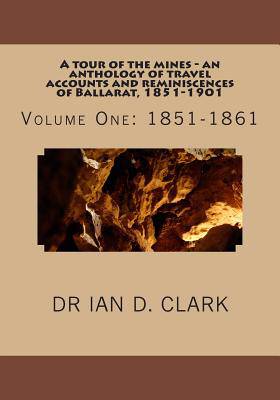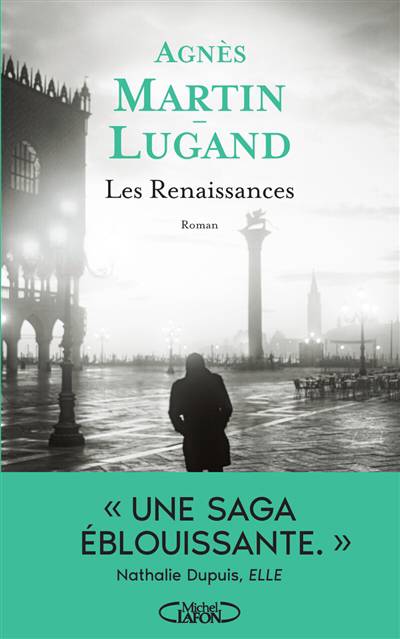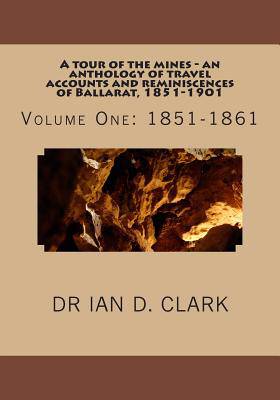
- Retrait gratuit dans votre magasin Club
- 7.000.000 titres dans notre catalogue
- Payer en toute sécurité
- Toujours un magasin près de chez vous
- Retrait gratuit dans votre magasin Club
- 7.000.0000 titres dans notre catalogue
- Payer en toute sécurité
- Toujours un magasin près de chez vous
A tour of the mines - an anthology of travel accounts and reminiscences of Ballarat, 1851-1901
Volume One: 1851-1861
Ian D Clark
89,95 €
+ 179 points
Description
Recently when looking through nineteenth century travel accounts of visitors to Victoria, Australia, that are in my personal library, I was struck by the number of published accounts from visitors who spent time in Ballarat. In assembling 126 discrete accounts from visitors spanning its first fifty years (1851 until 1901), I realised that here was a largely untapped resource. In assembling this archive of published visitor accounts, I have sought to extract their impressions of Ballarat and its immediate surrounds, including Buninyong, which is now part of the City of Ballarat. I have arranged the sources in alphabetical order within each decade, and where necessary I have provided each account with a brief contextual introduction. I have deliberately chosen to reproduce only published material. This archive is a trove of material that is rich and rewarding for many uses and users - for those looking to understand the evolution of a city from an Indigenous landscape and the contribution of gold mining to this development, the resource is indeed a rich quarry. The views presented here are from men and women, from clergymen, from British, Irish, Indian, American, Canadian, French, German, Hungarian, and other natonalities, from members of royal families, politicians, authors, journalists and other people with an interest in seeing this city that had sprung from gold. From the perspective of the evolution of tourism in Ballarat, these sources provide unparalleled glimpses of the transformation of a swamp into Lake Wendouree, muddy tracks transformed into wide and impressive streets, and botanical gardens and statuary that never failed to impress visitors. We see Ballarat transformed from a crude gold mining town into a grand regional city. A fundamental rationale for many visitors to Ballarat was the attraction of gold mining, and the opportunity to don work clothes and go down into the mines to see them in operation. This is Volume One spanning the years from 1851 to 1861.
Spécifications
Parties prenantes
- Auteur(s) :
- Editeur:
Contenu
- Nombre de pages :
- 680
- Langue:
- Anglais
- Collection :
- Tome:
- n° 1
Caractéristiques
- EAN:
- 9781499775211
- Date de parution :
- 03-06-14
- Format:
- Livre broché
- Format numérique:
- Trade paperback (VS)
- Dimensions :
- 178 mm x 254 mm
- Poids :
- 1161 g

Les avis
Nous publions uniquement les avis qui respectent les conditions requises. Consultez nos conditions pour les avis.






